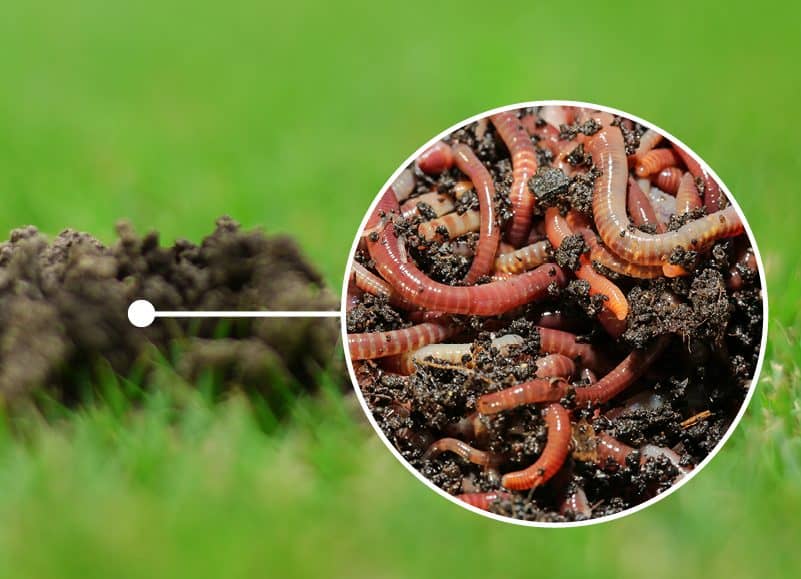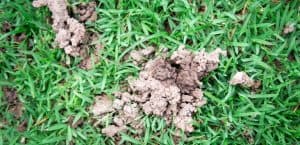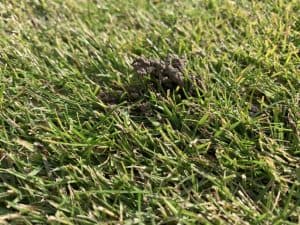
News

Earthworms and Your Lawn
May 3, 2022
Earthworm Castings
Have you noticed little mud balls sitting on your lawn recently? These mud balls or castings are an eyesore when there’s lots of them, particularly if you like to cut your lawn nice and short. We receive many enquiries relating to this annoying earthworm activity but it’s actually one lawn issue that we do not recommend treating. With changing conditions and a bit of patience, these castings will stop appearing and your lawn can reap the benefits of the earthworms presence in your soil.

Earthworms
These pleasant creatures are actually brilliant for your lawns health and they are busily working away beneath the surface. If earthworms are present in your soil, it means you have healthy soil that contains a good amount of organic material, so there is no reason to worry about them. If anything, you should be more worried if they are not present, as this will likely mean that your soil is lacking in nutrients and a good amount of organic matter.
These mounds can seem like a bit of a nuisance to deal with, but they are a sure sign of success. Here’s why:
Earthworm benefits
- Aeration of your soil
- Breaking down of thatch
- Increased decomposition
- Creation of usable nitrogen in the soil
Why would earthworms be considered a problem for your lawn?
Well the main reason you tend to notice that there are worms in your lawn is when they come up to the surface. During Spring and again in Autumn, or times of increased moisture, earthworms will rise to the surface and start leaving castings also known as mud balls. Castings are small mounds of worm excrement or digested organic matter, which is beneficial for your lawn. The only issue here is the appearance of these castings on top of your lawn, particularly if there are heaps of them.

What you can do about earthworm castings
- When the castings are dry, you can rake or brush them across the lawn. Much like an organic fertiliser this will then settle the castings into the roots and provide nutrition for your lawn.
- During wet periods when there is no break in rainfall, instead of waiting weeks for the castings to dry out, in some cases you can simply pick them up by hand. These castings are then best added to a compost bin.
- As worm activity is a sign of higher moisture levels, you can limit the amount of water your lawn is receiving to try and lessen their activity. When you do this, the worms will delve deeper into the soil in search of moisture. If rain and wet conditions have been persistent, then this can be particularly frustrating and the castings may stick around for an extended period. A very quick blast with a hose will help wash the castings in, lessoning their appearance on the lawn. The addition of even more water can obviously be somewhat counterproductive, so we only recommend doing this when castings are particularly bad and the additional water is minimal compared to the rain already being received.
- Mow your lawn on a higher setting to lessen the appearance of castings in your lawn.
Limiting worm activity
- Earth worms can rise to the surface to look for additional food sources like lawn clippings or leaves. By raking up leaves and mowing with a catcher you will reduce their food sources above the surface, letting them go back beneath the soil to look for food.
- Top dress your lawn with a high sand content top dressing. This will help lower the moisture levels closer to the surface, encouraging them to go down into the soil. This is best done in the warmer months while your lawn is actively growing.
So next time you see these little mounds in your lawn, try not to cringe – give yourself a pat on the back, reduce their appearance as best you can and enjoy the benefits they are providing to your soil and your lawn.